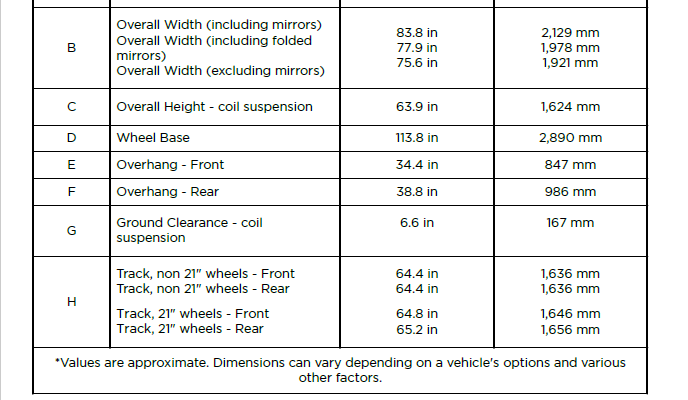The Tesla Model Y has made waves in the electric vehicle (EV) market since its debut, offering an impressive blend of performance, technology, and utility. One of the crucial aspects that potential buyers often consider is the weight of the vehicle, as it impacts everything from range to handling. In this article, we delve into the weight specifications of the Tesla Model Y, exploring how they contribute to its overall performance and efficiency.
- Understanding the Weight of the Tesla Model Y
- Weight Variations by Model
- Factors Influencing Weight
- Impact of Weight on Performance and Efficiency
- Exploring the Tesla Model Y: A Closer Look at Weight Implications
- Performance Dynamics
- Driving Efficiency
- Safety Features and Regulations
- Real-World Implications for Drivers
Understanding the Weight of the Tesla Model Y
The Tesla Model Y is classified as a compact SUV, designed to accommodate up to seven passengers while providing ample cargo space. Its weight is a critical factor in determining its driving dynamics, efficiency, and safety features. The Model Y’s weight can vary based on the configuration and options chosen.
Weight Variations by Model
- Model Y Long Range: The standard weight for the Long Range variant is approximately 4,416 pounds (2,007 kg). This version is designed for optimal range, combining dual-motor all-wheel drive with a robust battery pack.
- Model Y Performance: The Performance variant weighs slightly more at around 4,416 pounds (2,007 kg) as well, due to its enhanced features and performance-oriented upgrades, such as larger wheels and a sport-tuned suspension.
- Model Y Standard Range (if available): Tesla has also offered a Standard Range variant, which typically weighs around 4,300 pounds (1,950 kg), focusing on affordability while still delivering impressive performance.
Factors Influencing Weight
The weight of the Tesla Model Y is influenced by several factors:
- Battery Pack: The size and capacity of the battery pack significantly contribute to the overall weight. Tesla’s commitment to long-range capabilities means that the Model Y is equipped with a substantial battery, which naturally adds weight.
- Materials Used: Tesla utilizes a combination of aluminum and high-strength steel in the construction of the Model Y. This choice of materials helps keep the weight manageable while maintaining structural integrity and safety.
- Optional Features: Additional options such as larger wheels, enhanced sound systems, and other technological features can contribute to variations in weight across different configurations.
Impact of Weight on Performance and Efficiency
The weight of the Tesla Model Y plays a pivotal role in its overall performance and efficiency. Here are some key considerations:
- Handling: A lower weight generally enhances handling and responsiveness. The Model Y’s weight distribution and low center of gravity, thanks to the battery’s placement, contribute to its agile handling characteristics.
- Range: Weight affects the vehicle’s efficiency; heavier vehicles require more energy to accelerate and maintain speed. Tesla’s engineering ensures that the Model Y strikes a balance between weight and aerodynamic efficiency, optimizing range.
- Safety: Heavier vehicles often perform better in crash tests due to their mass. The Model Y’s weight, combined with its safety features and design, contributes to its high safety ratings.
As Tesla continues to innovate and refine its offerings, understanding the specifications of vehicles like the Model Y remains essential for informed purchasing decisions. The weight of the Model Y is just one of many factors that contribute to its reputation as a leader in the electric vehicle market.
Exploring the Tesla Model Y: A Closer Look at Weight Implications
As the electric vehicle landscape continues to evolve, understanding the specifications of models like the Tesla Model Y becomes essential for consumers making informed choices. Beyond the numbers, the weight of a vehicle plays a critical role in shaping its identity and performance. Let’s dive deeper into how the Model Y’s weight influences various aspects, from efficiency to user experience.
Performance Dynamics
The Model Y’s weight significantly impacts its acceleration and handling. The dual-motor all-wheel-drive system, coupled with the vehicle’s mass, allows for quick torque delivery, resulting in impressive acceleration times. The Long Range variant can go from 0 to 60 mph in just 4.8 seconds, while the Performance variant accomplishes the same feat in a blistering 3.5 seconds. This remarkable performance is a testament to how Tesla has optimized the vehicle’s weight distribution, ensuring that the Model Y not only feels nimble but also delivers exhilarating driving experiences.
Driving Efficiency
Weight is a critical factor in determining the range of electric vehicles, and the Tesla Model Y is no exception. Generally, heavier vehicles consume more energy, which can lead to decreased efficiency. However, Tesla’s engineering prowess allows the Model Y to maintain competitive range figures—up to 330 miles on a single charge for the Long Range variant. This balance is achieved through advanced aerodynamics and energy management systems that mitigate the effects of weight on range.
Safety Features and Regulations
Safety is paramount in the automotive industry, and the weight of the Model Y contributes to its robust safety ratings. Heavier vehicles tend to perform better in crash tests, and the Model Y benefits from Tesla’s comprehensive safety suite, including automatic emergency braking, collision avoidance systems, and a reinforced structure. The National Highway Traffic Safety Administration (NHTSA) awarded the Model Y a five-star overall safety rating, further validating Tesla’s commitment to safety through innovative design and engineering.
Real-World Implications for Drivers
For potential owners, understanding the weight of the Model Y can influence daily driving experiences. The weight affects not only how the vehicle handles but also how it performs in different driving conditions. In urban settings, the Model Y’s weight lends stability during cornering, while on highways, it provides a reassuring presence. Additionally, the vehicle’s weight impacts towing capacity, with the Model Y capable of towing up to 3,500 pounds, making it a versatile choice for families and adventure seekers alike.
The Tesla Model Y exemplifies how weight specifications can shape the identity and functionality of an electric vehicle. By leveraging its weight intelligently, Tesla has created a vehicle that is not only fun to drive but also efficient and safe. As the EV market continues to grow and develop, the Model Y stands out as a benchmark for others to follow, proving that in the world of electric vehicles, every pound counts. For those considering an investment in sustainable transportation, the Model Y presents a compelling choice that balances performance, efficiency, and utility—all packed into a stylish and innovative package.










The analysis of materials used in construction was particularly interesting. It
I found this article very informative! Knowing the weight specifications helps potential buyers like me make better decisions about our next EV purchase.
Fantastic read! The way you explained how weight influences driving dynamics was enlightening. I’m more inclined to consider a Model Y now!
I appreciate the thorough explanation of the different variants of the Model Y. The weight differences are definitely something I will consider when buying!
This is exactly what I needed to understand before making a decision on my next car. Thank you for breaking down complex information so clearly!
Loved this article! The comparison between the Long Range and Performance models was very helpful in understanding their differences.
This article provides a clear and detailed breakdown of the Tesla Model Y
Great insights into how the battery pack affects the overall weight! It really helps in understanding why Tesla prioritizes range in their vehicles.